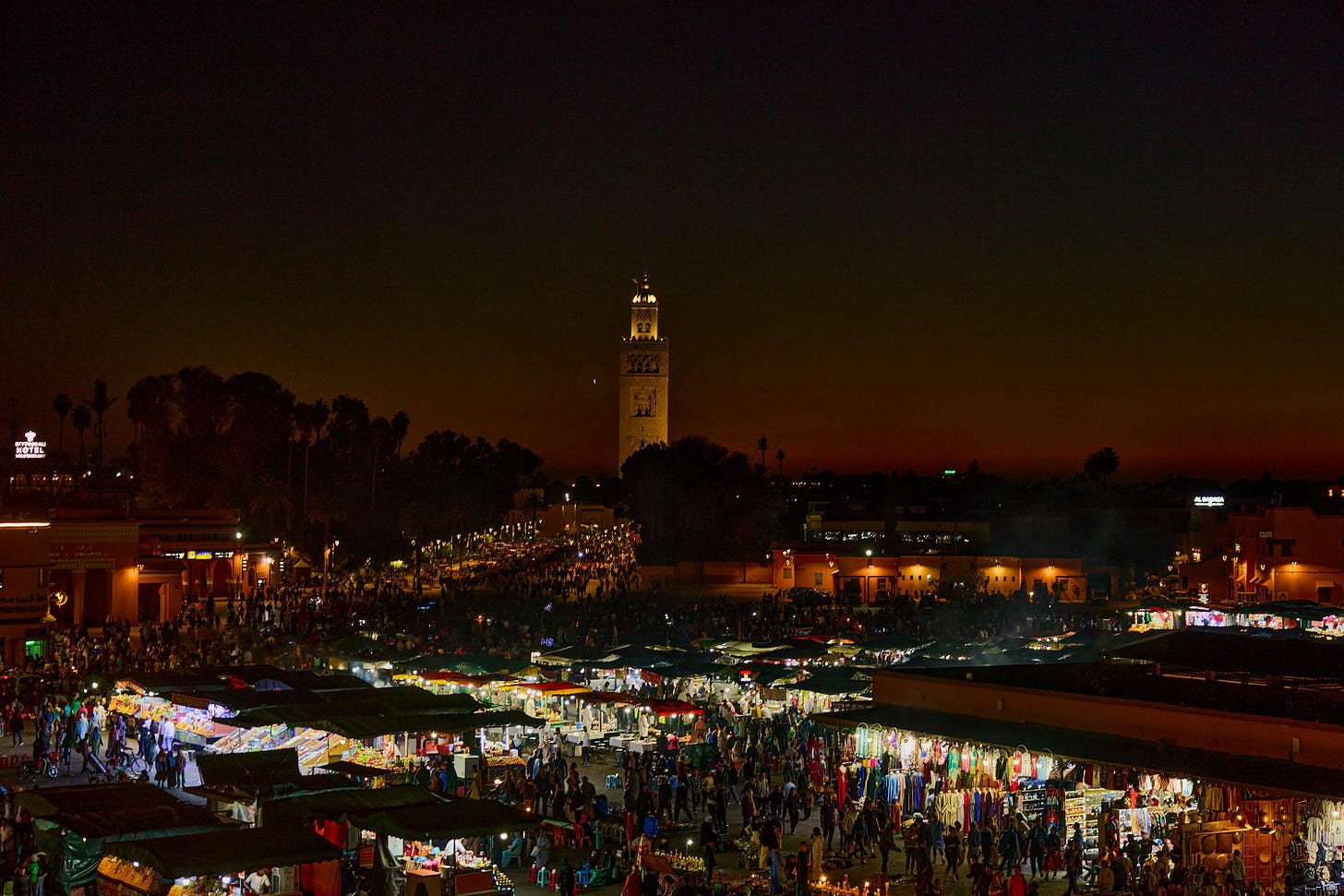Hello readers,
Regardless of your city or cultural background, there's one thing that unites us all: food.
We talk about food during lunch, think about what to make for dinner while having breakfast, stop by the supermarket because we want to try out a certain recipe, and observe the world around us as we look for the next restaurant that will catch our eye. The topic of how food shapes our cities is very broad, but we could start by questioning the sustainability (human, economic, and climate-related) of our food systems (especially when it comes to meat and fish), make observations about the unacceptable amount of food waste, especially while we still did not put an end to world hunger, and begin to concern ourselves with the health state of our bodies. So yes, it is indeed a very wide topic, but we hope to give you a glimpse of all of these issues through our November newsletter.
Our starting point for this theme was something that may seem obvious: cities, too, revolve around food. Ordinary squares turn into local markets where you can find local and fresh produce, streets fill up with people when it is lunchtime, entire neighbourhoods are dedicated to specific types of cuisine (e.i. Little Italy or China Town in New York ), parks turn into a big party of smells over the weekend, you take your bike and go to the other side of town just because there is a supermarket selling that specific product that reminds you of home.
We move, and the city with us, based on food.
Let's dig into this.
Have a great weekend!
Irene Verde,
Service and communication designer
“Food is everything we are. It’s an extension of nationalist feeling, ethnic feeling, your personal history, your province, your region, your tribe, your grandma. It’s inseparable from those from the get-go.”
— Anthony Bourdain
🌎 From the world.
What happens when a large country like Brazil has most of its population concentrated in urban centers and cities? Often, celebrated and innovative approaches come from Europe or North America, but can those projects be applied to completely different contexts, for example in the Global South? In a city like New York, we worry about where to grow fruits and vegetables because of the high density of buildings and smog. In countries like Brazil (and many others), the focus is on how to feed an entire population. The "Brazil Fome Zero" project aims to sustainably meet the food needs of citizens. The two fundamental pillars of this project are social participation and the reduction of food waste.
An interesting project is Full Belly Brazil where they combine the Brazil Zero Hunger initiative with a shift in dynamics regarding food waste and climate change.
🚲 From the Netherlands.
The AMS Institute collaborated with the Municipality of Amsterdam for the project “Metropolitan Food System”. The collaboration between the two organizations began when the city of Amsterdam aimed to shift to a more sustainable focus of the food production chain from animal welfare to the climate and social sustainability of producers, addressing everything from food transportation to the final products consumed by citizens. The aim is to promote healthier, more sustainable, and conscious eating habits through a strategy based on food as a social connection. The role of AMS Institute has exactly been to identify those connections and social values about the typical Amsterdam food stories that are the basics of the local food culture of Amsterdam. This project merges the human side of the city and the innovation of urban ecology.
🧡 From Humankind.
Are the public spaces of our cities welcoming when a citizen wants to enjoy a picnic in the park? Or a quick lunch in front of the river? Or a sandwich during a walk in the city centre? With our Good Public Space Model, we can detect what are the needs of the citizens when it comes to eating –and drinking! – in public spaces. Yes, it could be way more than just a bench - here you can read our blog post “Stories of Good Public Space: #3 Eating and Drinking” on how.

📚 Dive Deeper.
The podcast “The Food Chain” by BCC News - Word Service with Ruth Alexander deals with food all around: from new foods to eating culture, to the economics of food. We specifically suggest the episode “How to feed a City” where Carolyn Steel, architect and author of the book “Hungry Cities”, is brought into the show to try to answer the question 'what are the dynamics of feeding an entire city?' The episode provides examples of different strategies used by cities around the world, but we must also ask: how will we manage when, in 2050, seven out of ten people will live in cities? What are the possible solutions to feed all these citizens with varying needs? And above all, what are the consequences?
🤩 So beautiful.
“The point of departure for Carolyn Steel's current work lies in the notion of Sitopia: that food and places shape each other in intricate ways. Sitopia is a term that Carolyn Steel coined, merging together two Ancient Greek terms: sitos (food) + tópos (place)”. (quote from the article by Ya - Young Academics Network).
The plaza of Jamaa el Fna in Marrakech is a beautiful example of this dynamic.
It’s always beautiful seeing how citizens actually shape the city.





